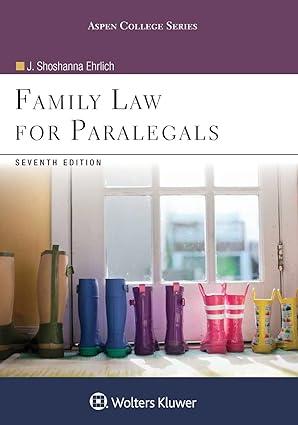The defendant appeals from an abuse prevention order issued against her pursuant to G.L. c. 209A by
Question:
The defendant appeals from an abuse prevention order issued against her pursuant to G.L.
c. 209A by a District Court judge based on events that occurred in a residential program under the auspices of the Department of Developmental Services. Because we conclude that individuals who share a common diagnosis or status, rather than marriage, blood, or other relationships that are enumerated in G.L.
c. 209A, §1, and who live together in a State-licensed residential facility, do not qualify as "household members" within the meaning of G.L.
c. 209A, \(\S 1\), we vacate the order against the defendant. Facts and procedure. The defendant and the victim are intellectually disabled adults who receive services from the Department of Developmental Services (department) in a residential program operated by a third party, Riverside Community Care, with funding from the department. Both individuals have legal guardians, family members in each case, who have been appointed by judges in the Probate and Family Court. The parties do not dispute the following facts that resulted in the complaint for an abuse prevention order: On May 22, 2012, the defendant went upstairs to the hallway outside the victim's bedroom and, during an ensuing altercation, pushed the victim into the bathroom. As a result of being pushed, the victim suffered injuries to her head, neck, and back when she fell backward into a bathtub. The defendant asserts, in essence, that residents in a State-governed facility are not eligible for the protections provided by G.L.
c. 209A, because receiving services through a residential program run by a governmental agency does not constitute "residing together in the same household" for the purposes of the statute. We agree....
Questions:
1. What statutory provision did the plaintiff rely on in seeking an order of protection against the defendant?
2. What arguments did the plaintiff rely on is seeking to persuade the court that she was within the terms of this provision?
3. Identify the reasons the court provided in support of its conclusion that the plaintiff was not covered by the law.
Step by Step Answer:






